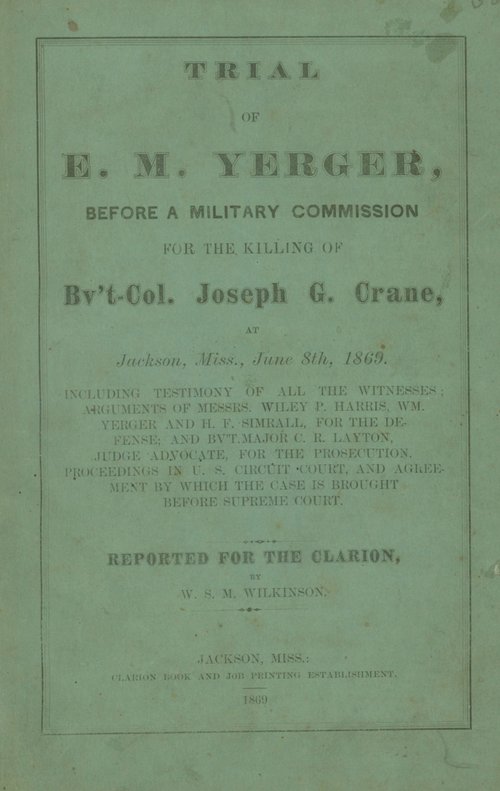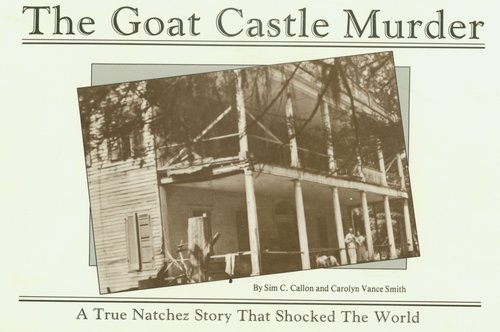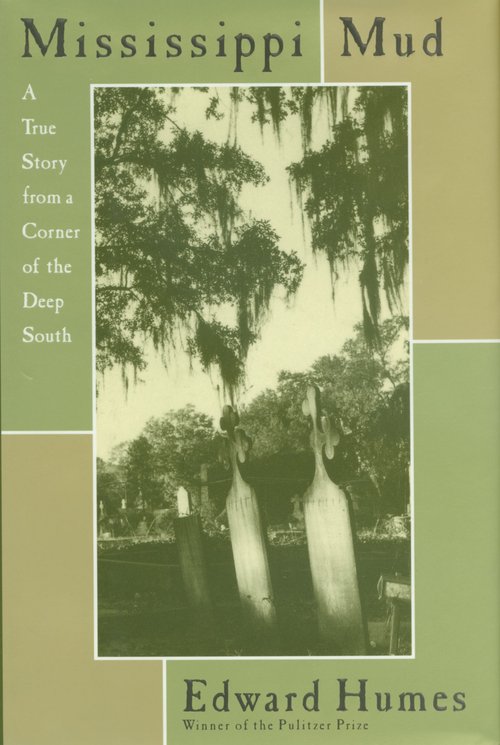Exhibits
Mississippi True Crime
A thin line separates truth from fiction between the lurid covers of true crime works. Phillip Rawlings, a scholar of the genre, defines true crime as “usually concerned with a particular crime or criminal and the process of detection. It is aimed at a non-specialist market, is cheap, easily available and easy to read.” Journalistic techniques are common. In fact, many former reporters become authors of true crime, but to create a spell-binding narrative, they also utilize fiction techniques.
Although the phenomenon of true crime has taken on new life since the early 1990s, its historical roots are much earlier. By the 1500’s in England, accounts of dying speeches by condemned prisoners appeared on printed broadsides. In order to quell the inaccuracies of these publications (and to share in some of the profits) the warden of Newgate Prison in 1684 began to print coverage of trials, executions, and short biographies of prisoners in a widely popular series entitled Accounts.
These accounts developed into sensational reports and finally evolved into the novel format that captured the twentieth-century American audience by storm. Considered one step above tabloid journalism, true crime began to skim the surface of respectability with Truman Capote’s chilling 1966 work In Cold Blood.
The reader of contemporary true crime generally seeks a restoration of order amidst chaos. This desire is even more prevalent in a world filled with images of crime and violence. Legal scholar Susan Weiner comments that, “media coverage about sensational crimes as well as the symbiotic relationship between true crime paperbacks and tabloid television have accelerated the phenomenon.”
The exhibit features accounts recording the tragic tales of sensational crimes in Mississippi. The works highlighted follow a chronological development of Mississippi-related true crime publications. They begin with early trial records published by a Jackson, Mississippi newspaper and continue from Reconstruction through the civil rights era and into the seedy casino underworld of the 1990s.

Reconstruction
The trial of E.M. Yerger of Jackson, Mississippi in 1869 took place in the midst of the transition from Presidential to Congressional Reconstruction policies. Yerger, who had fallen behind on his taxes, a fact he disputed, was to have his piano sold by the then Mayor of Jackson and military officer, Colonel Joseph G. Crane. Crane attempted to seize the piano prompting Yerger to stab Crane to death when the two eventually met to settle the problem. Tried in a military court, the Yerger case never reached a conclusion, as it was prolonged until Reconstruction ended. The author of the inlaid 1926 Clarion-Ledger article asserts an interpretation of Reconstruction generally ascribed to former Confederates declaring that eventually “the south reverted to the hands of its own people” thereby ensuring “justice” for Yerger.
W. S. M. Wilkinson. Trial of E. M. Yerger, before a military commission for the killing of Bv’t Col. Joseph G. Crane, at Jackson, Miss., June 8th, 1869. Including testimony of all the witnesses; arguments . . . Reported for the Clarion. Jackson, MS: Clarion Book and Job Printing Establishment. 1869.

Race and Crime
Both of the works featured in this section of true crime result from the efforts of late twentieth-century historians to solve nineteenth-century Mississippi murders. John Phillip Colletta explores an 1873 Mississippi murder case handed down as family lore in Only a Few Bones. In Death of an Overseer, author Michael Wayne attempts to uncover the truth behind the 1857 murder of a Natchez, Mississippi plantation overseer.
In the summer of 1955, Emmett Till, an African-American teenager from Chicago visiting relatives in Money, Mississippi, was viciously murdered. Although Till was known as a quiet, shy young man with a stutter, he was accused of making sexual advances to a white female. After a jury acquitted two white men of the brutal slaying, one of the accused bragged of his involvement to the national media. On display are works published around the time of the crime which all feature aspects of true crime narrative. Of particular note is the piece entitled Complete Photo Story of Till Murder Case published by Ernest Withers, an African-American photographer from Memphis. Offering graphic photographs and unprecedented access to the Till family, Withers began the work with the question “Why such a pamphlet as this?” He answered this question with the hope that his pamphlet would “serve to help our nation dedicate itself to seeing that such incidents need not occur again.”
John Philip Colletta. Only a Few Bones: A True Account of the Rolling Fork Tragedy and its Aftermath. Washington: Direct Descent, 2000.
Michael Wayne. Death of an Overseer. New York: Oxford University Press, 2001.
Ernest C. Withers. Complete Story of Till Murder Case. Memphis, TN: Wither's Photographers, 1955.

Society and True Crime
Chronicling the scandalous murder of society maven Jeannie Merrill in the summer of 1932, this tale involves all the traditional aspects of the true crime genre: a sensational crime, a search for the killer, and drama. The eccentricities of the characters involved adds further spice to the mix.
Sim C. Callon and Carolyn Vance Smith. The Goat Castle Murder: A True Natchez Story that Shocked the World. Natchez, MS: Plantation Publishing Company, 1986.

Murder on the Mississippi Gulf Coast
Biloxi, Mississippi during the late 1980s provides a lush setting for the brutal murders of Circuit Court Judge Vincent Sherry and his politically involved wife, Margaret.
Edward Humes. Mississippi Mud: A True Story from a Corner of the Deep South. New York: Simon & Schuster, 1994.
